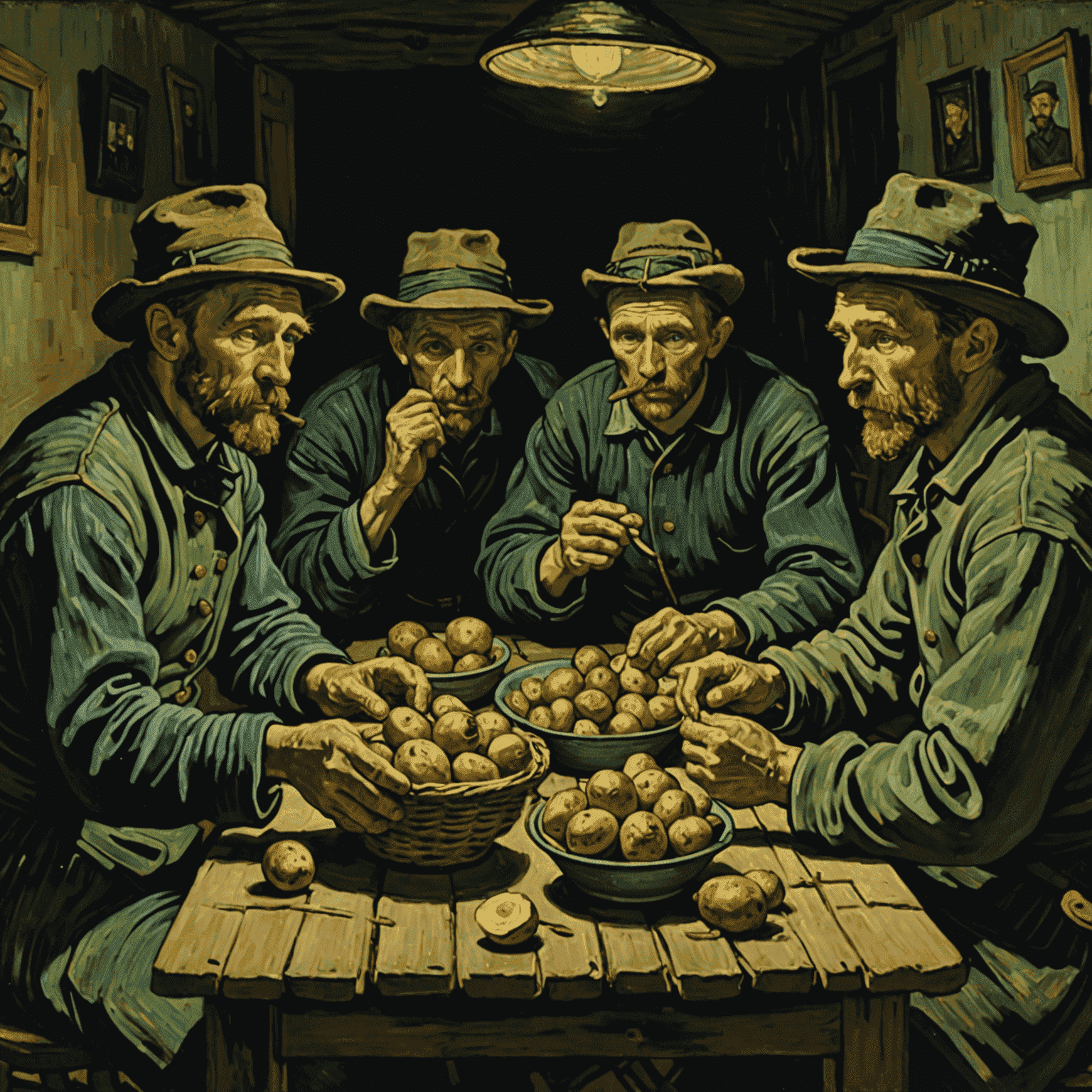The Potato Eaters: Van Gogh's Social Commentary

The Potato Eaters, painted by Vincent van Gogh in 1885, is one of his earliest and most significant works. The painting portrays a group of peasants gathered around a table, sharing a humble meal of potatoes. Through this seemingly simple scene, Van Gogh makes a powerful social commentary on the harsh realities of rural life in 19th-century Netherlands.
The dark, earthy tones used in the painting reflect the somber atmosphere and the hardships faced by the peasants. The figures are depicted with rough, angular features, emphasizing their weathered appearance and the toll of their laborious lifestyle. The dim lighting in the room further underscores the sense of poverty and struggle.

By choosing to depict this scene, Van Gogh sought to shed light on the social inequalities and the plight of the working class. He aimed to capture the essence of their existence, marked by hard labor, meager sustenance, and a sense of solidarity in the face of adversity. The Potato Eaters serves as a testament to Van Gogh's deep empathy for the marginalized and his desire to give a voice to their struggles.
The painting also marks a significant milestone in Van Gogh's artistic development. It demonstrates his early experimentation with a darker palette, expressive brushwork, and a focus on capturing the raw emotions of his subjects. The Potato Eaters laid the foundation for his later, more well-known works that continued to explore themes of humanity and the human condition.
Today, The Potato Eaters remains a powerful and thought-provoking work, inviting viewers to reflect on social issues, empathy, and the role of art in shining a light on the lives of the less privileged. It stands as a testament to Van Gogh's keen observation, his deep understanding of the human experience, and his ability to convey profound messages through his art.